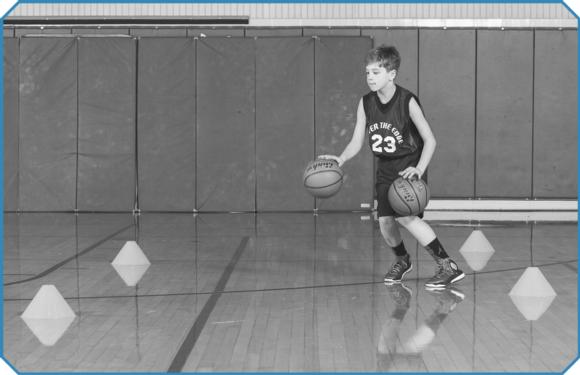Consider the individual athlete's needs when developing a training plan
This is an excerpt from Periodization-6th Edition by Tudor O Bompa,Carlo Buzzichelli.
Individualization is one of the main requirements of contemporary training. Individualization requires that the coach consider the athlete's abilities, potential, and learning characteristics and the demands of the athlete's sport, regardless of the performance level. Each athlete has physiological and psychological attributes that need to be considered when developing a training plan.
Too often, coaches take an unscientific approach to training by literally following training programs of successful athletes or sport programs with complete disregard for the athlete's training experience, abilities, and physiological makeup. Even worse, some coaches take programs from elite athletes and apply them to junior athletes who have not yet developed the physical literacy, physiological base, or psychological skills needed to undertake these types of programs. Young athletes are not physiologically or psychologically able to tolerate programs created for advanced athletes. The coach needs to understand the athlete's needs and develop training plans that meet those needs. This can be accomplished by following some guidelines.
Plan According to Tolerance Level
The training plan must be based on a comprehensive analysis of the athlete's physiological and psychological parameters, which will give the coach insight into the athlete's work capacity. An individual's training capacity can be determined by the following factors:
- Biological age: The biological age of an athlete is considered a more accurate indicator of the individual's physical performance potential than his chronological age. One of the best indicators of biological age is sexual maturation because it indicates an increase in circulating testosterone levels. Athletes who are more physically mature, as indicated by a higher biological age, appear to be stronger, faster, and better at team sports than their peers who exhibit a lower biological age, even when chronological age is the same. In general children have a greater resistance to fatigue, which may explain why they respond better to higher volumes of training. On the other hand, older adults appear to exhibit a decreased motivation to train intensely, an increased prevalence of injuries, and an increased occurrence of social stressors, all of which may contribute to a decreased ability to tolerate intense training. Most junior athletes tolerate high volumes of training with moderate loads better than high-intensity or high-load training. The combination of heavy loading and high volume is of concern with youth athletes because this practice may increase the risk of musculoskeletal injuries.
- Training age: Training age is defined as the number of years an individual has been preparing for a sporting activity, and it is considerably different than the biological or chronological age. Athletes with a high training age have developed a substantial training base and most likely will be able to participate in a specialized training plan, especially if their early training was multilateral. An athlete who has a high chronological age in conjunction with a low training age may need more multilateral and skill acquisition training because he lacks the training base to allow for a high degree of specialization in his sport.
- Training history: The athlete's training history influences his work capacity. An athlete who has undertaken substantial multilateral training is more likely to have developed her physical potential and readiness for more challenging training, compared with an athlete who has not been trained as well.
- Health status:An athlete who is ill or injured will have a reduced work capacity and often will not be able to tolerate the prescribed training loads. The type of illness or degree of injury and the physiological base converge to determine the training load that the athlete can tolerate. The coach must monitor the athlete's health status to determine an appropriate training load.
- Stress and the recovery rate:The ability to tolerate a training load is often related to all of the stressors that the athlete encounters. Overall stressors are considered additive, and factors that place a high demand on the athlete can alter his ability to tolerate a training load. For example, heavy involvement in school, work, or family activities can affect the athlete's ability to tolerate a training load. Travel to and from work, school, or training can further contribute to stress levels. Coaches should consider these factors and adjust the training load accordingly. For example, during times of high stress, such as academic examinations, a reduction in training load may be warranted.

The age and skill level of an athlete, along with other factors, must be taken into consideration when planning training and practice sessions.
Individualize the Training Load
The ability to adapt to a training load depends on the individual's capacity. As outlined in the preceding section, many factors contribute to the individualized response to training loads and progressions: the athlete's training history, health status, life stress, chronological age, biological age, and training age. Simply mimicking the training plans of elite athletes will not result in high levels of performance. Rather, the coach must address the athlete's needs and capacities by developing an individualized program; this requires detailed observations of the athlete's technical and tactical abilities, physical characteristics, strengths, and weaknesses. As will be discussed later in this chapter, in the section about training models, periodic testing of the athlete will allow for more specific and individualized training plans to be developed. If athletes are roughly at the same level of development and stage of training, less individualization of the training plan may be needed.
Learn more about Periodization: Theory and Methodology of Training, Sixth Edition.
More Excerpts From Periodization-6th EditionSHOP

Get the latest insights with regular newsletters, plus periodic product information and special insider offers.
JOIN NOW
Latest Posts
- Sample mental health lesson plan of a skills-based approach
- Sample assessment worksheet for the skill of accessing valid and reliable resources
- Help your students overcome what holds them back from making health-promoting choices
- Example of an off-season microcycle
- Modifying lifts
- Screening for multilevel programs in a team environment


